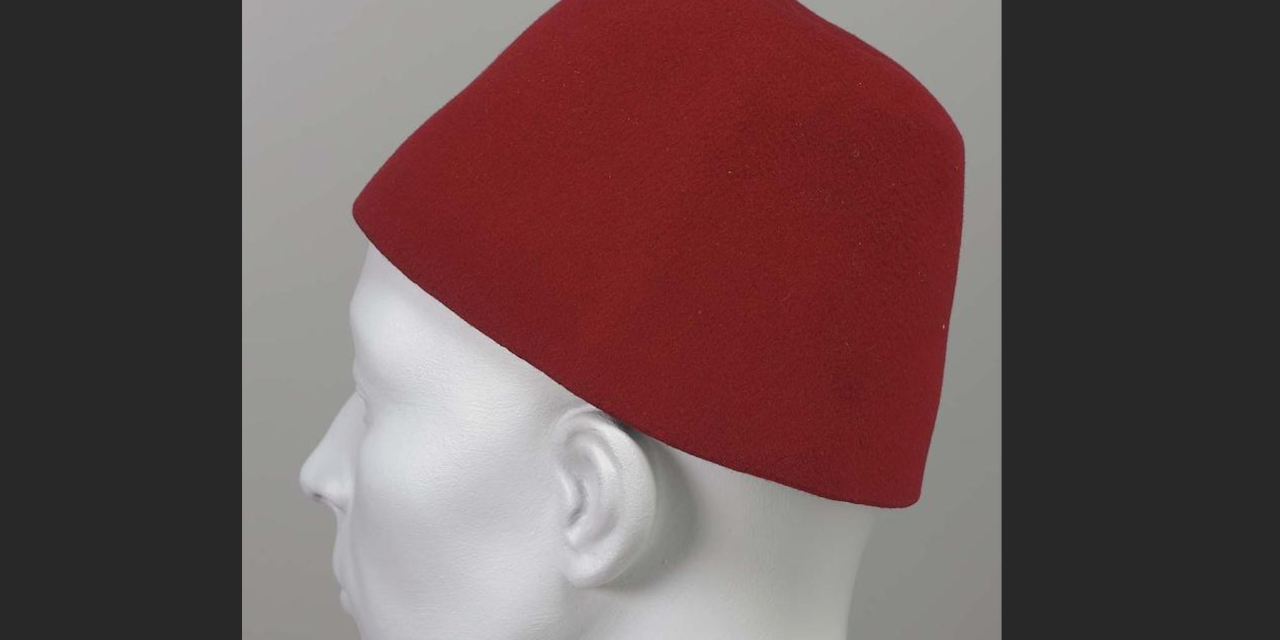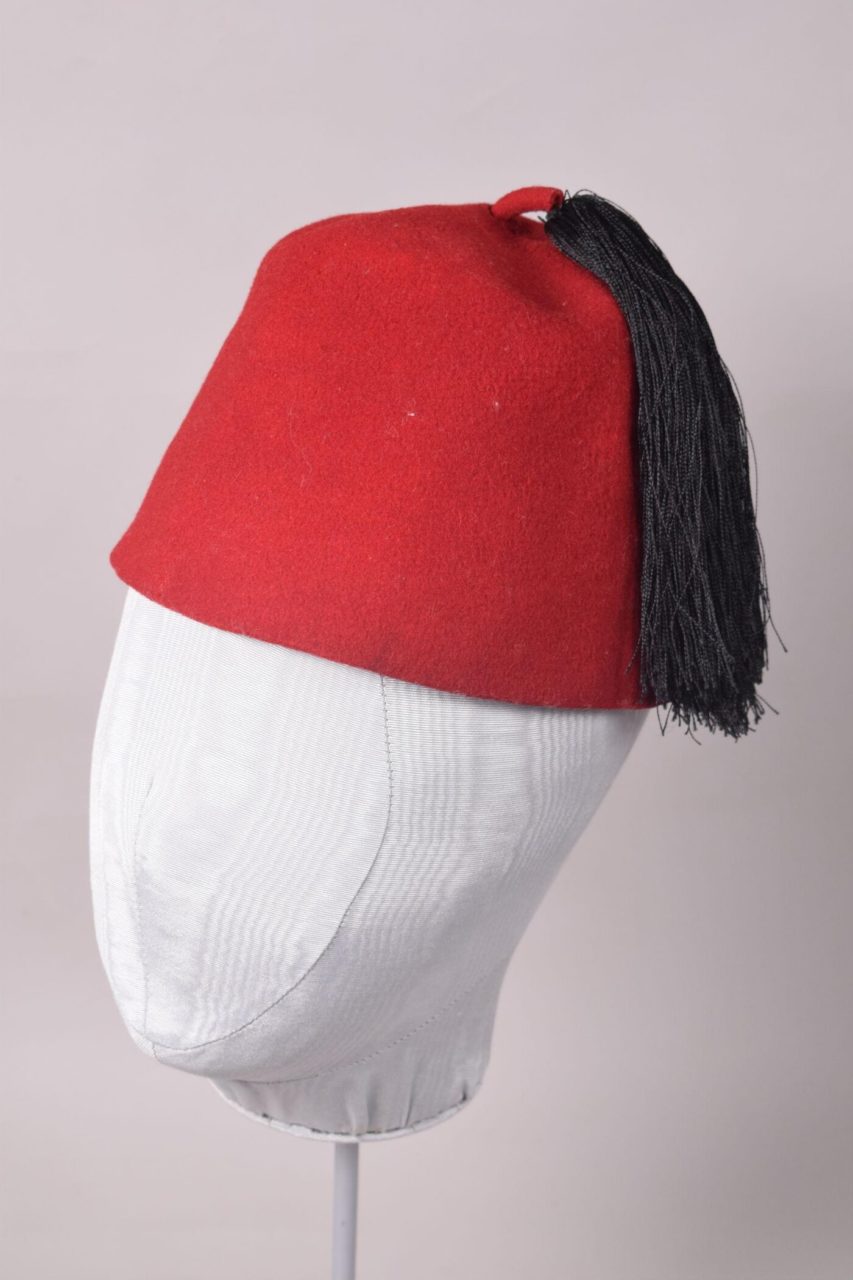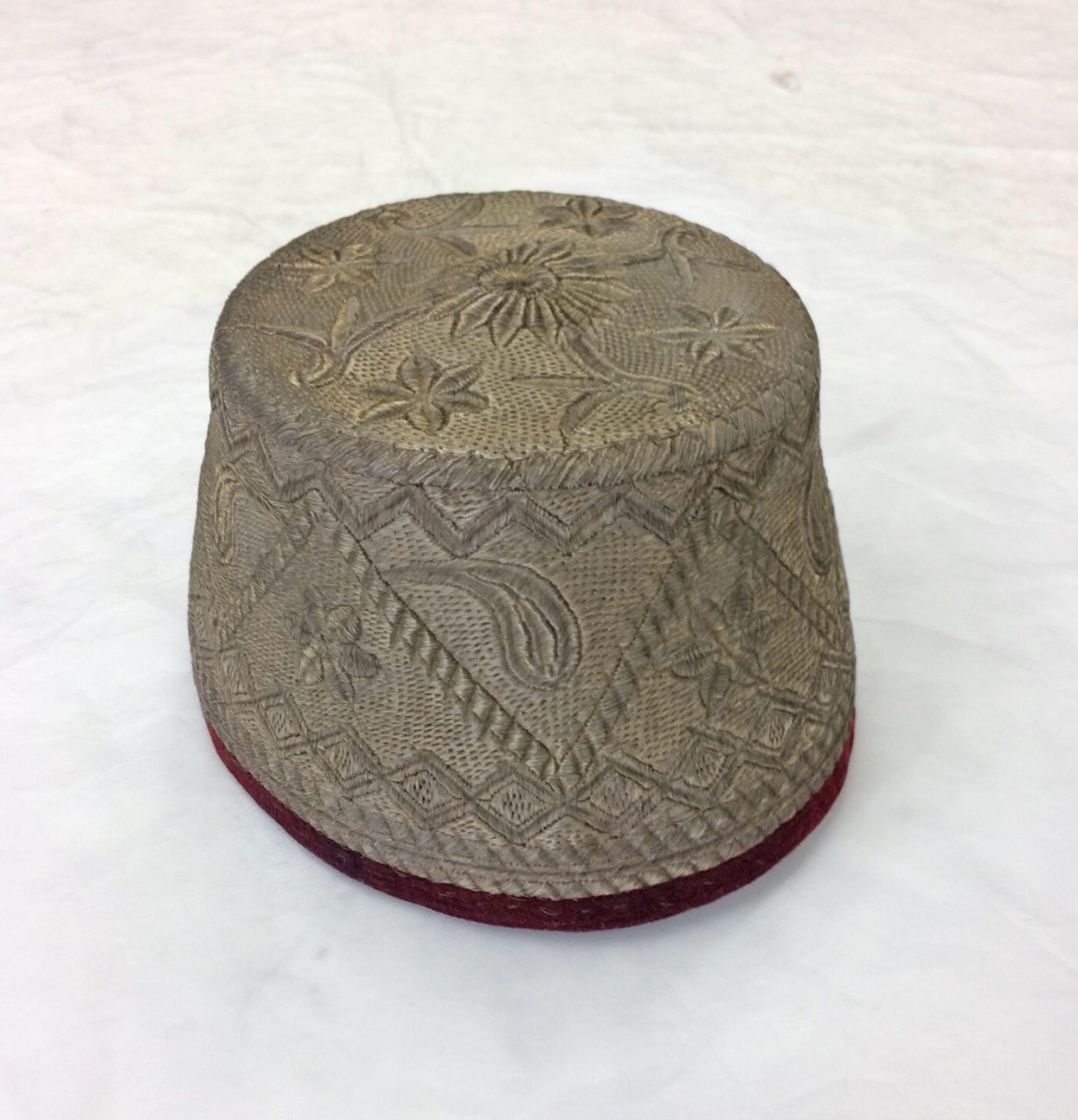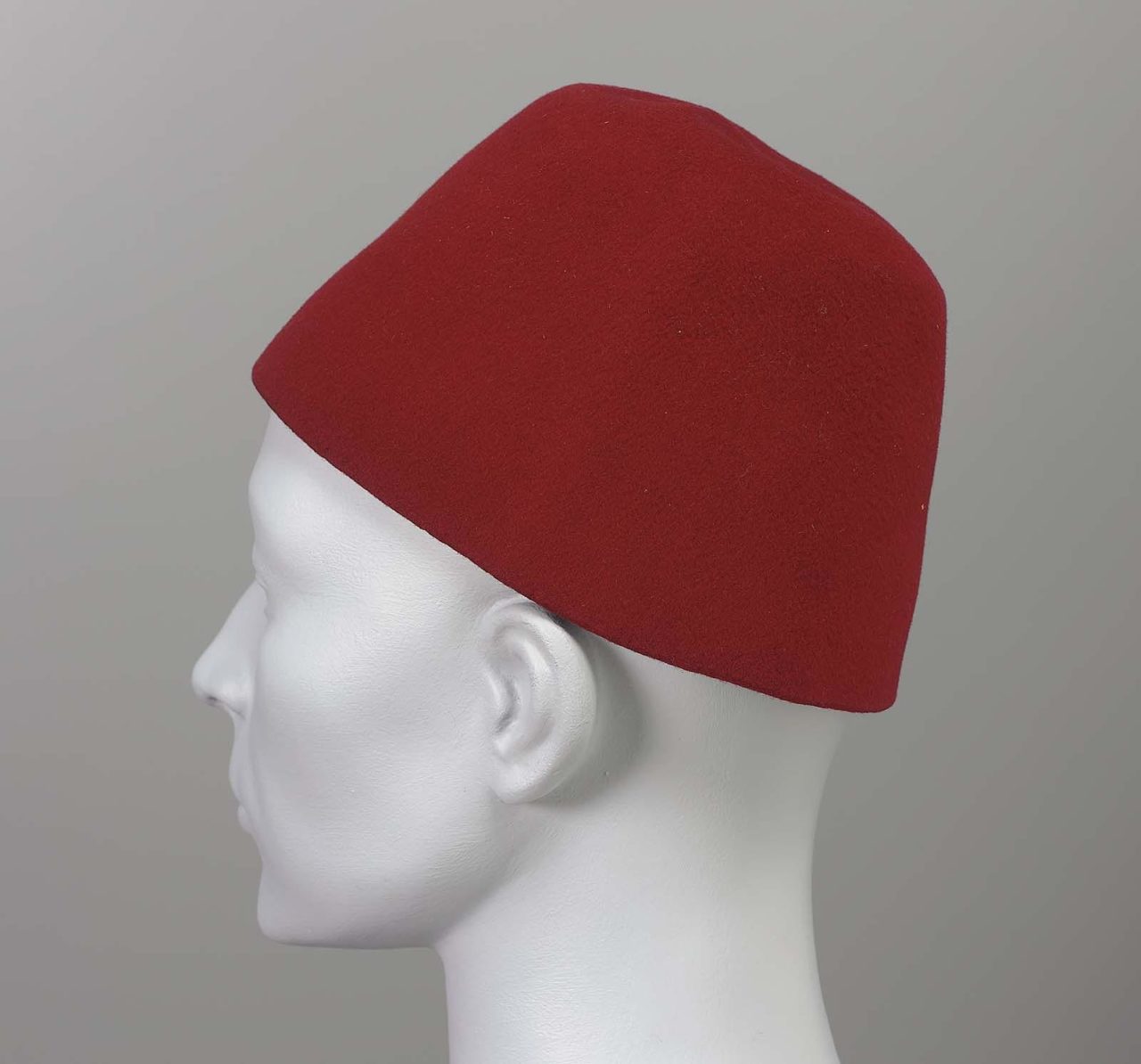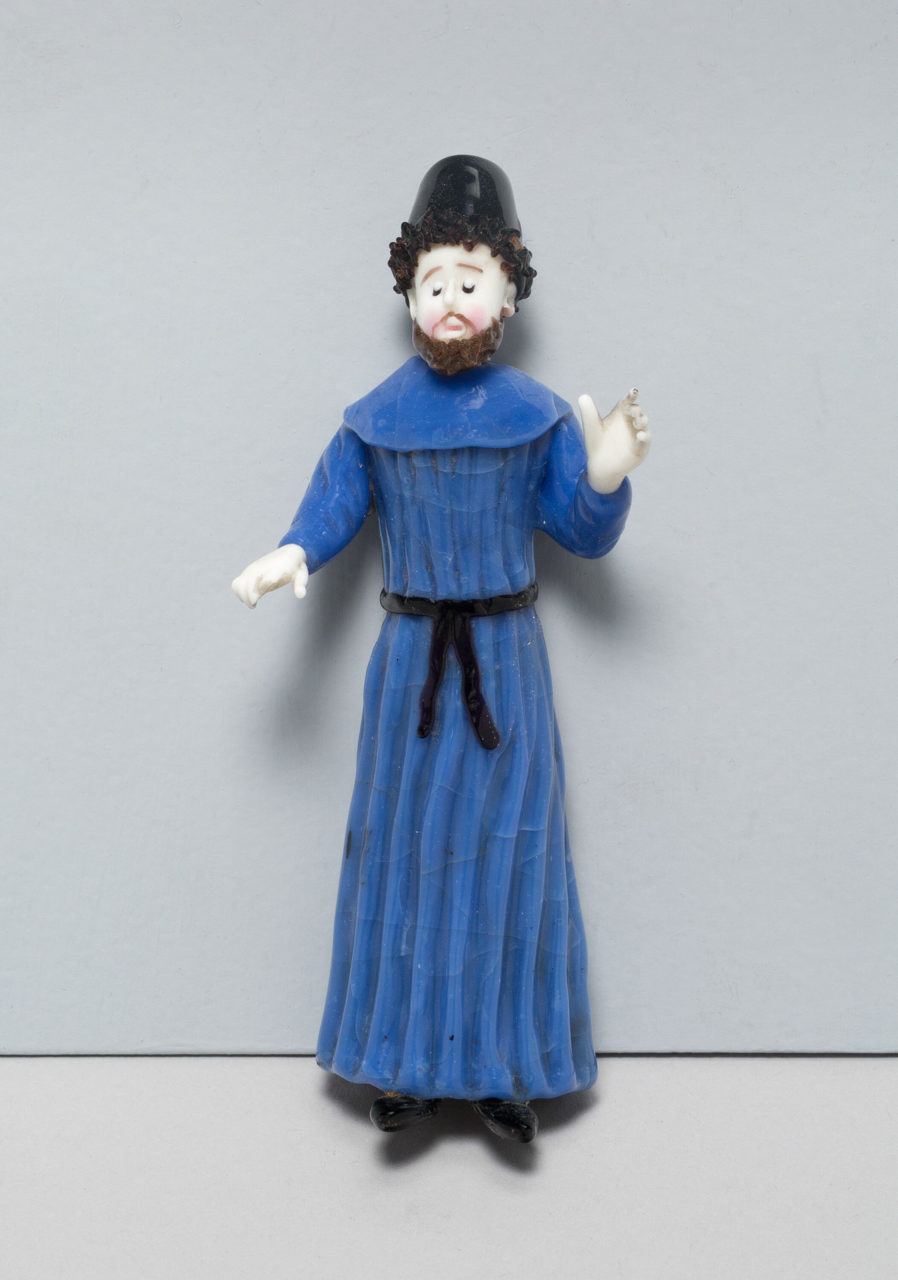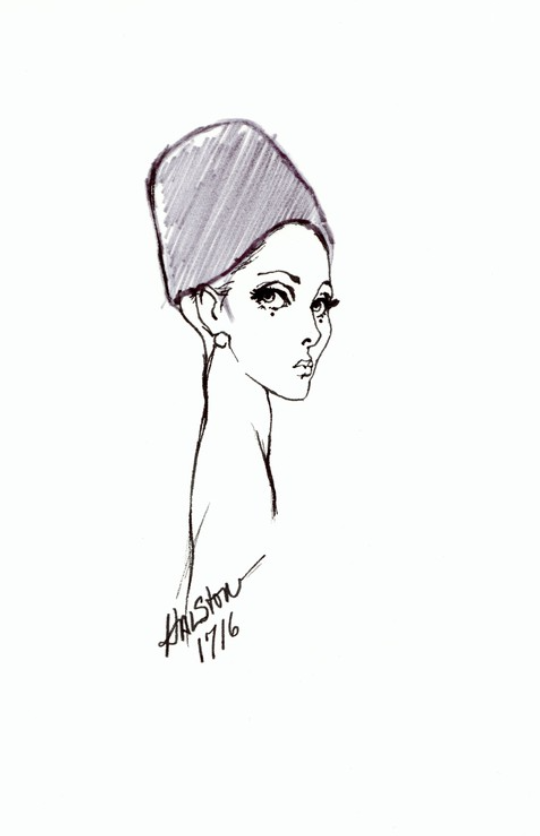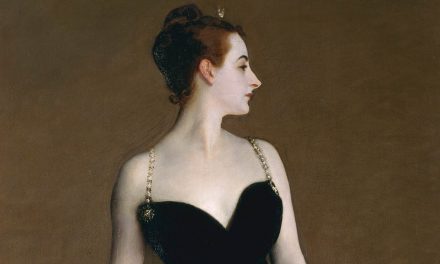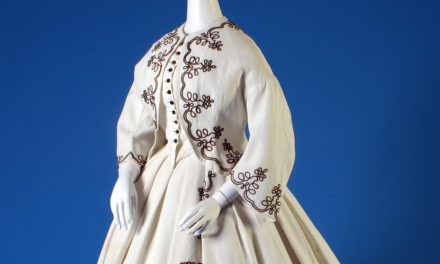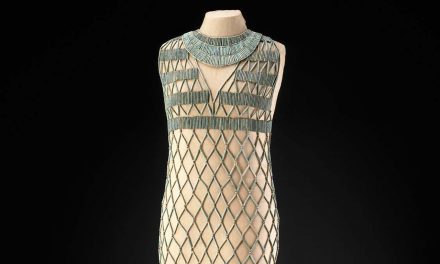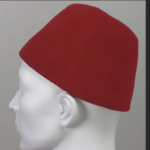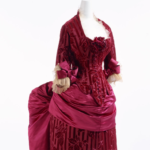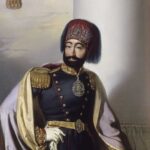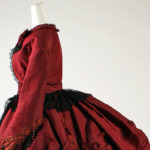A flat-topped hat with no brim that was sometimes adorned with tassels and was originally from the Moroccan city, Fez. Since its origin it has been worn by many in the Middle East, Eastern Europe and North Africa in various styles throughout history.
The Details
In “The Coming of Islam and Its Influence on Dress” from Berg Encyclopedia of World Dress and Fashion: Central and Southwest Asia (2010), Gillian Vogelsland Eastwood defined a fez as:
“A red cap shaped like an upturned flowerpot, usually made of felted material.”
A late-nineteenth century fez from the collection at the Victoria & Albert Museum in London, made of red felt with a black artificial silk tassel attached to the top, shows the characteristic shape (Fig. 1). The collection also has a late 19th century fez with silver thread embroidery of leaf and zig-zag patterns, bound with red velvet (Fig. 2).
The fez can be traced back to the early nineteenth century when, according to Robert Anderson in Fifty Hats That Changed The World (2011):
“the modernizing sultan of the Ottoman Empire, Mahmud II, decreed the abolition of the traditional male headgear, the turban, and its replacement by the tasseled red fez, which was already worn by some of his Greek subjects and by Ottoman sailors in North Africa.”
However, in 1935 a westernizing leader declared the fez illegal and inhabitants of the Turkish capitol struggled to find a new head covering to wear during prayer.
Figure 3 shows an example of a fez from the Museum of Fine Arts in Boston, in its simplest form with no added adornments, embroidery, or trims. The man’s fez (Fig. 3), dating back to approximately 1835, was made with deep red felt and is missing its tassel.
Mary Neuburger in the Berg Encyclopedia of World Dress and Fashion: East Europe, Russia, and the Caucasus (2010) discusses the fez:
“Similar in shape [to the kalpak] but generally manufactured and made of felt,” and “The fez, in fact, made its appearance in western Balkan cities at about the same time Bulgarians began to arrive in significant numbers.”
A fez could also be embroidered or made in other colors besides the traditional red. An example of this can be seen in figure 2, which depicts a fez with silver embroidery and figure 4, which shows a black fez.
When discussing the fez in Dress Reforms of The Early Twentieth Century in Turkey, Iran, and Afghanistan (2010), Derek Bryce defines it as:
“A flat-topped, conical, brimless hat often accessorized on top with a tassel.”
A glass figurine depicting a man wearing a black fez (Fig. 4) was made in France in the second half of the 18th century, and can be found in the collection of the Art Institute of Chicago.
Fig. 1 - Designer unknown. Fez, 1850-1899. Felt, artificial silk, and metal; circumference of brim, measured on inside of hat circumference: 570mm height: 150mm measured across base diameter: 200mm cm. London: Victoria & Albert Museum, T.111-1971. Given by Mrs E Mackworth Praed.. Source: V&A
Fig. 2 - Designer unknown. Fez, late 19th century. Embroidered leather (possibly), cotton thread and velvet; circumference: 50.5cm depth: 10cm. London: Victoria & Albert Museum, T.261-1976. Given by Mrs Daphne R Kahn. Source: V&A
Fig. 3 - Maker unknown. Fez, 1835. Felt; 56.2 cm (22 1/8 in). Boston: Museum of Fine Arts Boston, 52.1310. Gift of Ralph Lowell, in memory of John Lowell Jr.. Source: MFA Boston
Fig. 4 - Artist unknown. Man with a black fez, 1750-1799. Glass; lampwork (verre de nevers), metal armature; h. 8.9 cm (3 1/2 in). Chicago: Art Institute of Chicago, 1941.1179. Gift of Mrs. Potter Palmer through the Antiquarian Society. Source: AIC
Its Afterlife
T
oday the fez is a national symbol of Morocco and therefore still worn by the King and his cabinet ministers. After World War II the fez is mostly just worn as part of parade uniform because they were too visible to enemies in battle. Nowadays, the fez is more of a symbol for luxury and relaxation. In the Middle East and North Africa, hotel staff will often wear a fez for tourists.
The fez has been used as inspiration to Euro-American designers as seen in figure 5, which shows a Halston sketch of a black fez made in the 1960s.
Fig. 5 - Halston (American, 1932-1990). A sketch done by Halston of a Black Fez from the 1960s drawn in black and white., 1960s. Watercolor, pencil; (5 1/2” x 7” in). Source: SPARC Digital
References:
- Anderson, Robert. Fifty Hats That Changed the World. London: Conran Octopus in association with The Design Museum, 2011.
- Bryce, Derek. “Dress Reforms of the Early Twentieth Century in Turkey, Iran, and Afghanistan.” In Berg Encyclopedia of World Dress and Fashion: Central and Southwest Asia, edited by Gillian Vogelsang-Eastwood, 52–56. Oxford: Berg Publishers, 2010. Accessed October 12, 2021. http://dx.doi.org.libproxy.fitsuny.edu/10.2752/BEWDF/EDch5008.
- Neuburger, Mary. “Bulgaria: Urban Dress.” In Berg Encyclopedia of World Dress and Fashion: East Europe, Russia, and the Caucasus, edited by Djurdja Bartlett and Pamela Smith, 419–423. Oxford: Berg, 2010. Accessed October 12, 2021. http://dx.doi.org.libproxy.fitsuny.edu/10.2752/BEWDF/EDch9081.
- Vogelsang-Eastwood, Gillian. “The Coming of Islam and Its Influence on Dress.” In Berg Encyclopedia of World Dress and Fashion: Central and Southwest Asia, edited by Gillian Vogelsang-Eastwood, 31–34. Oxford: Berg Publishers, 2010. Accessed October 12, 2021. http://dx.doi.org.libproxy.fitsuny.edu/10.2752/BEWDF/EDch5006.

